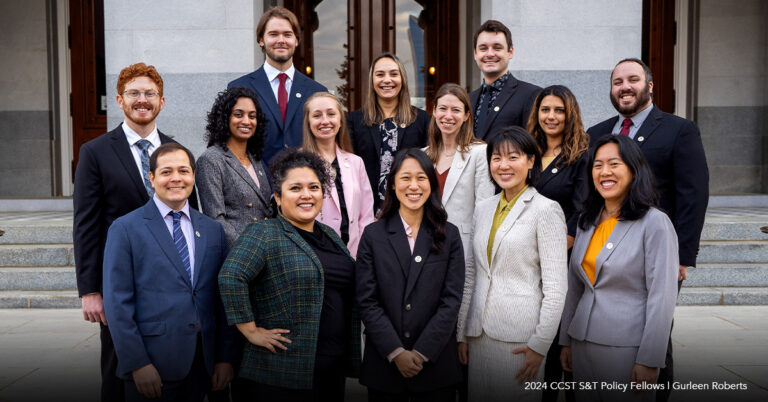Update: Applications for the CCST Science & Technology Policy Fellowship Have Closed
Cal TAC Member Shares Experience At NAE Symposium
October 1, 2009 | CCST Newsroom | Contact: M. Daniel DeCillis

On September 8th, the National Academy of Engineering and the National Research Council held a symposium to release a new report emphasizing the importance of introducing engineering into K-12 education. The report examines the status and nature of efforts to teach engineering in U.S. schools. California Teacher Advisory Council (Cal TAC) member Pete Arvedson attended the symposium to participate in the discussion with the committee.
“This was a great experience and a wonderful opportunity to share the Cal TAC message and perspective with a broader audience from industry, education, and government,” said Arvedson.
The committee found that engineering education opportunities in K-12 schools have expanded considerably in the past 15 years. Since the early 1990s, the report estimates, about 6 million children have been exposed to some formal engineering coursework. However, this number is still small compared with the overall number of students in K-12 schools (approximately 56 million in 2008).
Arvedson notes that, while the emphasis on introducing an additional focus on math and science skills and graduating more engineers is positive, the study demonstrated a lack of familiarity with certain realities of the K-12 classroom.
“There was a lot of focus on the importance of introducing more problem-based learning,” said Arvedson. “K-12 educators already know that problem-based learning is needed. Practical application, though, is often hindered by district, state, and federal mandates that focus only on test scores. Problem-solving cannot occur without time to explore – time not allowed by district-developed standards calendars created to help boost test scores.”
Likewise, Arvedson noted that symposium participants did not seem to recognize the increasing tendency of math and science teachers to work together, suggesting that engineering could serve to integrate separated curriculum ‘silos’.
“Small learning communities are already an important part of many middle and high schools,” said Arvedson. “A substantial paradigm shift does need to take place in K-12 engineering education, but it is not necessarily the one indicated here.”
The report’s recommendations include funding research to determine how science inquiry and mathematical reasoning can be connected to engineering design in curricula and professional development, and the commencement of a national dialogue on preparing K-12 engineering teachers.
“This report is likely to have an impact on release of funds from government and private agencies, as well as industry,” said Arvedson. “This would be a good time to promote research on those topics mentioned in the recommendations, as well as plan and implement the kind of well-designed, effective teacher professional development that Cal TAC has been discussing for so long.”






